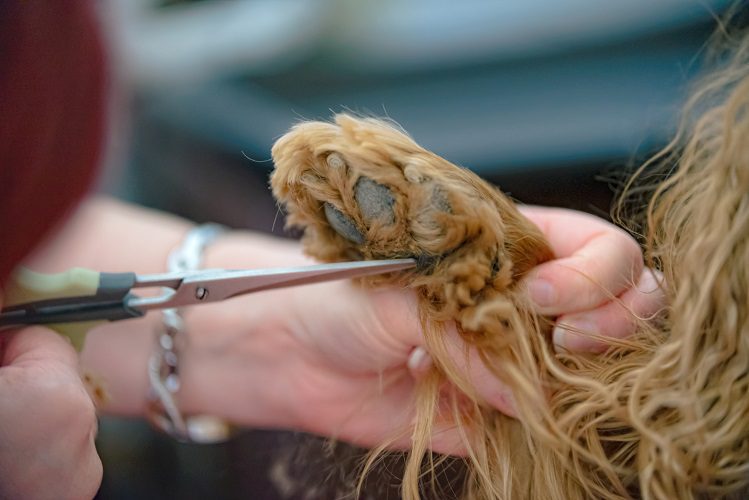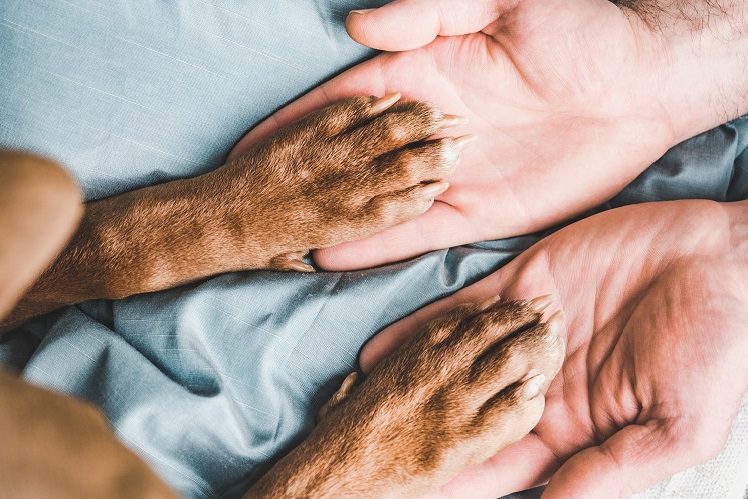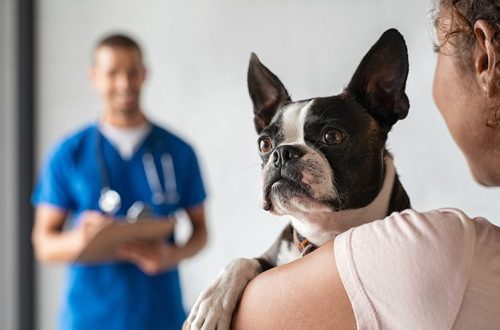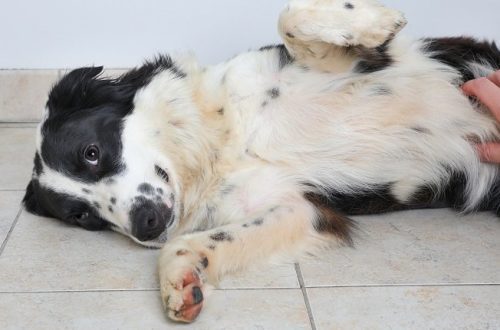
First aid for a dog with cracked paws
Paw pads in dogs are a shock absorber: they reduce the load on the pet’s musculoskeletal system. Like the feet of humans, the pads of the paws take on the role of supporting the entire body. If they are covered with cracks, it means that not everything is going smoothly with the natural protective barrier. Let’s talk about what health problems can accompany cracked paws, and tell you how to give your pet first aid.
Puppies have very soft paw pads. The older and larger the pet, the more dense and firm the skin on the fingertips becomes. However, healthy skin on the paw pad of a dog will never be overdried, cracked.
In order for the paw pads of dogs to remain healthy and well-groomed, it is enough to follow a few simple rules:
claws on paws should always be neatly trimmed. A strongly grown claw can dig into the pad on the paw;
regularly carry out hygienic haircuts between the fingers – the shorter the hair in these places, the less the pads will get dirty and the easier it will be to clean them;
After each walk, wash your dog’s paws under running water and dry them dry. If the pet has long hair on its paws, even a hair dryer is suitable for drying (choose not the most intense mode);
if the pet’s paws are very dirty, rinsing them with water alone will not be enough. Use a special shampoo or conditioner for dogs (available at the pet store);
in cold and wet weather, protect your pet’s paws with boots or rubberized socks.

Nature has provided quite large loads for the paw pads in dogs. But when there are too many loads – walking, training, working out teams, active games – the pads can’t cope and wear out or crack.
Excessive weight of a pet means an increased load on the entire musculoskeletal system, on the paws. Maybe it’s time for your ward to limit the amount of calories consumed and walk more?
Due to the lack of fluid in the body, the skin ceases to be elastic and is easily injured. Make sure your four-legged friend drinks more water. Keep several bowls of fresh water available to your pet in different parts of the house.
Cracked paw pads in dogs can mean that the body lacks zinc and selenium. It’s time to consult with a veterinary nutritionist. The right diet will help fill the lack of nutrients and improve the well-being of a four-legged friend. The condition of the skin on the paws may worsen due to nutritional errors and an improperly formulated diet. Remember if someone close to you could treat your pet with something harmful?
- Allergies to chemicals are a common cause of cracked paws in dogs. Try not to use harsh household chemicals for cleaning. After using chemicals, such as floor cleaners, wipe the floor with plain water. Chemical compounds can irritate the skin on the paws of dogs.
No less dangerous are the reagents that are sprinkled on the streets in winter. Try to drive your pet on sidewalks as little as possible in winter. If the pet is miniature, it is quite possible to carry it to the park in your arms. Or give the ward winter shoes.
- Exposure to cold and heat also leads to cracked paws in dogs. Don’t go for long walks if it’s cold outside. Do not walk your four-legged friend on hot asphalt, go out early in the morning or late in the evening, when the pet is not in danger of overheating. In hot weather, moisten the paw pads with cool water.
If you notice that the pet has cracked paws, first of all, the affected area must be cleaned and treated with an antiseptic. We wash the paws with water and remove the remaining dirt with clean gauze. Do not use cotton – there is a risk that the cotton particles will clog into the wounds.
What antiseptic is suitable? Furacilin solution, chlorhexidine solution. If you are unable to make sure that the antiseptic solution gets exactly to the areas that need to be treated, take a syringe without a needle and draw the solution into it.
Lubricate the treated paw pads with special paw wax or a remedy recommended by your veterinarian for such situations. It is advisable to bandage the paw and change the bandage regularly. To further protect the paw, put a retainer over the gauze bandage. You can use a baby sock or even an umbrella cover. It is better to fix the bandage or the sock worn over it with a plaster or tape in the area of uXNUMXbuXNUMXbthe narrowest part of the foot. When it’s time to change your bandage, carefully cut the tape or patch with scissors.
Don’t let your four-legged friend rip off the bandage and lick the wound. It is highly undesirable for bacteria from saliva to get into a wound or crack on the paw. If your ward, in spite of everything, tries to lick the wound, you will have to put a special collar around his neck.
In the first couple of days, when the cracks on the paws are still being healed, you can walk the dog, but not for long. As you heal, you can increase the walking time. It is better to walk a four-legged friend in shoes or rubberized socks.
Cracked paws are a good reason to visit a veterinarian. The malaise can be caused by a variety of reasons, the veterinarian will help to find the root of the problem.
If the pads on the paws are not only cracked, but also swollen, inflamed, it is necessary to contact a veterinary dermatologist immediately, immediately after first aid.
Do not self-medicate, as you will only aggravate the situation and harm your ward. The veterinarian will examine the pet, make a diagnosis and prescribe the necessary medications.

Special waxes, ointments and oils for dog paw pads are effective preventive measures that will help prevent cracks. They can be purchased at pet stores and veterinary pharmacies.
In cold weather, it is better to use protective wax for paws of dogs – it will act as a sealant. If it’s just cool outside, a product with a less dense consistency will do. Apply protective wax and ointment before your walk. After the promenade, always carefully examine each paw. If your pet has damaged paw pads, you will immediately know about it and can help.
Special shoes for dogs will help protect the paws from damage. The main thing is to choose the right size. To do this, take your pet with you to the pet store to immediately try on a new thing.
When it’s warm and dry outside and your four-legged friend’s paw pads look completely normal, it’s enough to apply a thin layer of emollient at night once a week. Put children’s socks on the paws with ointment so that a curious pet does not eat the ointment from the paw. If you don’t have a special paw cleanser on hand, you can replace it with olive oil or coconut oil, which is often used in hair care. If the paw pads are too dry, periodically apply a little coconut oil or nourishing shea butter to them and do a light massage.
Proper diet and healthy body weight, moderate exercise – this is the secret to good condition of the paw pads in dogs. But even in the care of the paws of a pet, it is necessary to observe the measure. An adult Labrador cannot have “baby heels”! We wish health and playful mood to your pets!





